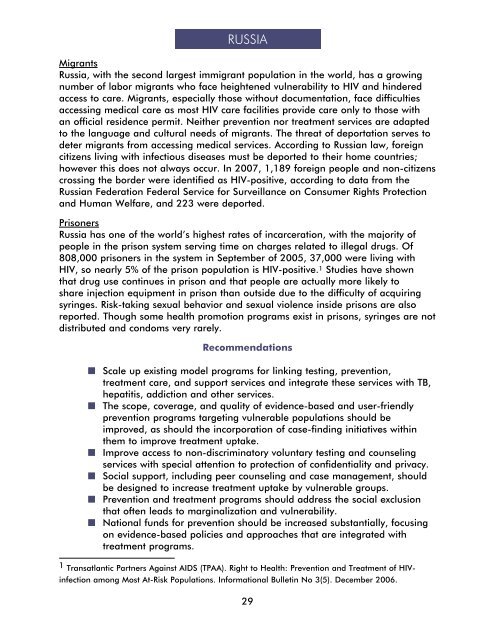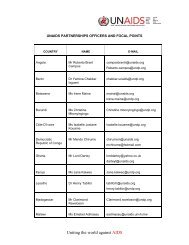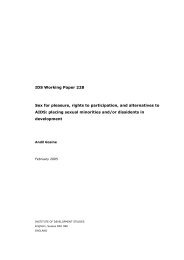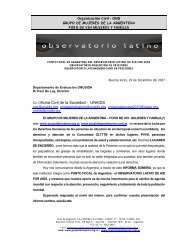Missing the Target #5: Improving AIDS Drug Access ... - CD8 T cells
Missing the Target #5: Improving AIDS Drug Access ... - CD8 T cells
Missing the Target #5: Improving AIDS Drug Access ... - CD8 T cells
Create successful ePaper yourself
Turn your PDF publications into a flip-book with our unique Google optimized e-Paper software.
RUSSIAMigrantsRussia, with <strong>the</strong> second largest immigrant population in <strong>the</strong> world, has a growingnumber of labor migrants who face heightened vulnerability to HIV and hinderedaccess to care. Migrants, especially those without documentation, face difficultiesaccessing medical care as most HIV care facilities provide care only to those withan official residence permit. Nei<strong>the</strong>r prevention nor treatment services are adaptedto <strong>the</strong> language and cultural needs of migrants. The threat of deportation serves todeter migrants from accessing medical services. According to Russian law, foreigncitizens living with infectious diseases must be deported to <strong>the</strong>ir home countries;however this does not always occur. In 2007, 1,189 foreign people and non-citizenscrossing <strong>the</strong> border were identified as HIV-positive, according to data from <strong>the</strong>Russian Federation Federal Service for Surveillance on Consumer Rights Protectionand Human Welfare, and 223 were deported.PrisonersRussia has one of <strong>the</strong> world’s highest rates of incarceration, with <strong>the</strong> majority ofpeople in <strong>the</strong> prison system serving time on charges related to illegal drugs. Of808,000 prisoners in <strong>the</strong> system in September of 2005, 37,000 were living withHIV, so nearly 5% of <strong>the</strong> prison population is HIV-positive. 1 Studies have shownthat drug use continues in prison and that people are actually more likely toshare injection equipment in prison than outside due to <strong>the</strong> difficulty of acquiringsyringes. Risk-taking sexual behavior and sexual violence inside prisons are alsoreported. Though some health promotion programs exist in prisons, syringes are notdistributed and condoms very rarely.RecommendationsScale up existing model programs for linking testing, prevention,treatment care, and support services and integrate <strong>the</strong>se services with TB,hepatitis, addiction and o<strong>the</strong>r services.The scope, coverage, and quality of evidence-based and user-friendlyprevention programs targeting vulnerable populations should beimproved, as should <strong>the</strong> incorporation of case-finding initiatives within<strong>the</strong>m to improve treatment uptake.Improve access to non-discriminatory voluntary testing and counselingservices with special attention to protection of confidentiality and privacy.Social support, including peer counseling and case management, shouldbe designed to increase treatment uptake by vulnerable groups.Prevention and treatment programs should address <strong>the</strong> social exclusionthat often leads to marginalization and vulnerability.National funds for prevention should be increased substantially, focusingon evidence-based policies and approaches that are integrated withtreatment programs.1 Transatlantic Partners Against <strong>AIDS</strong> (TPAA). Right to Health: Prevention and Treatment of HIVinfectionamong Most At-Risk Populations. Informational Bulletin No 3(5). December 2006.29
















